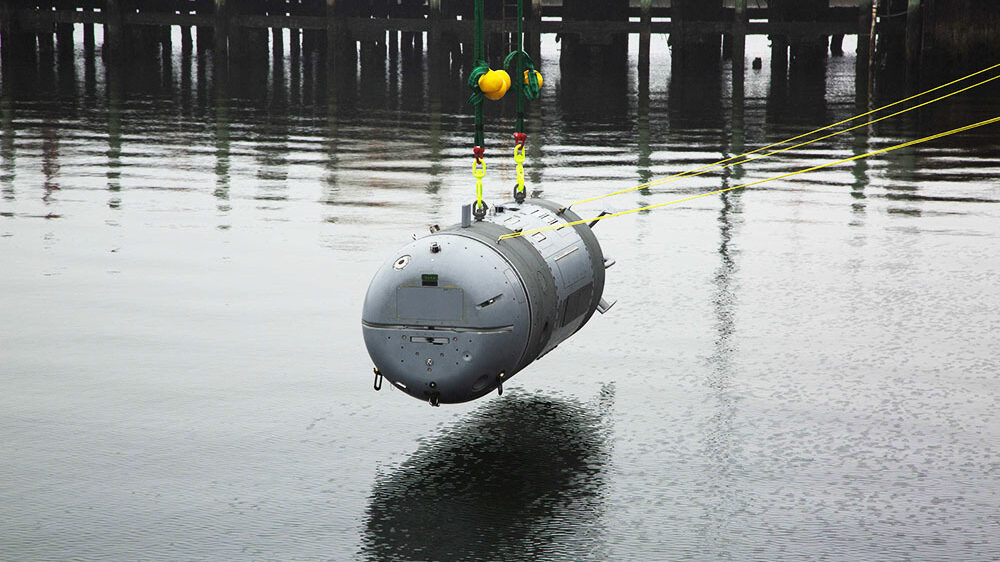
The US Navy’s Large Displacement Unmanned Undersea Vehicle prototype, dubbed Snakehead, while undergoing testing at a naval facility in Rhode Island. (Richard Allen via US Navy)
SEA AIR SPACE 2023 — The Navy plans to resume testing one of its premiere large unmanned undersea vehicles, but the program’s future — including a previously planned competition among industry — remains in murky waters as engineering constraints conflict with lawmaker interests.
The program, the Large Displacement Unmanned Undersea Vehicle, or Snakehead, which is roughly four feet in diameter and between seven and eight feet long, has been in development for more than a decade, but the service in the fiscal 2023 budget request sought permission to sink its funding. The problem had to do with the Navy’s ability to deploy and recover it onboard next-generation submarines, an officer in charge of the effort said here Tuesday at the Sea Air Space exposition.
“We needed to align with the next generation SSN(X)… So, when the Virginia Payload Module that was going to be the primary launch [and] recovery method for LDUUV went away, then our way to get on and off submarines went away,” said Capt. Scot Searles, the LDUUV program manager. SSN(X) refers to the service’s next-generation attack submarine that will follow the Virginia class. The Virginia Payload Module, a special section of the latest Virginia-class submarines, is equipped with large-diameter, vertical launch tubes, perfectly suited to deploying LDUUV. As their name implies, they are a feature of the Virginia-class boats but will not necessarily be included onboard SSN(X).
As such, the program was destined for the sea floor until lawmakers in the annual defense policy bill stepped in, effectively telling the Navy that the tech is too important to scrap and urging the service secretary to keep pursuing it through market research of commercially available technologies.
With that in mind, the service is now seeking a minimal amount of funding, $7 million, in the fiscal 2024 budget to continue R&D using a prototype the Navy already has. “We’ve requested money in the FY24 budget. If Congress approves that, and appropriates that, our intent is to continue to use that vehicle to continue testing,” said Searles, adding that the current prototype has not yet undergone testing at deeper depths and that could be a focus area.
What is not clear yet is what may happen to the previously planned competition among industry the Navy had intended to execute for LDUUV. The acquisition strategy, prior to the pause in FY23, saw the Naval Undersea Warfare Center working with industry to produce a preliminary LDUUV design that contractors would eventually compete to manufacture.
Searles did not address the issue during his remarks. The service’s budget justification documents indicate the second phase of the planned government-industry design was “stopped” in FY22 due to a lack of funding, but the documents do not elaborate further. Naval Sea Systems Command, the agency charged with the program’s advancement, did not respond to questions from Breaking Defense.
In the meantime, the Navy has begun preparations to scale other unmanned systems to the “fleet level,” its two top leaders announced here Tuesday, a move that will push the Navy’s largely experimental efforts in the operational environment of US 4th Fleet and US Southern Command.























